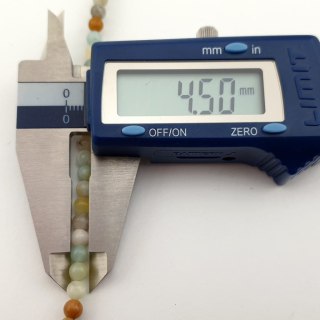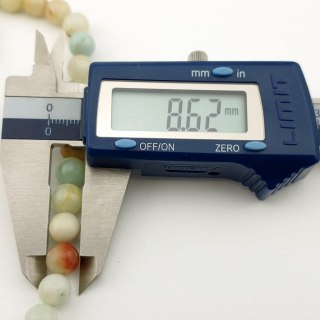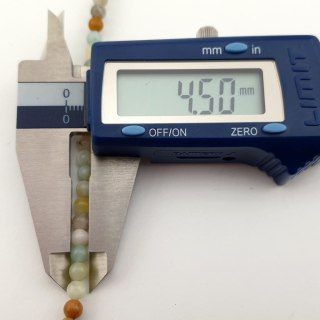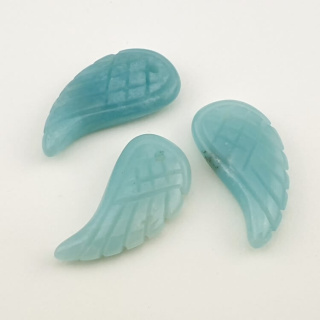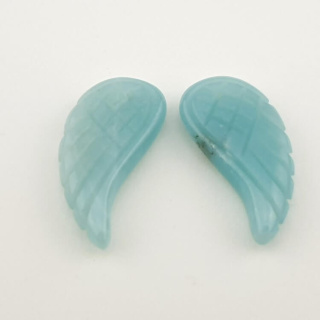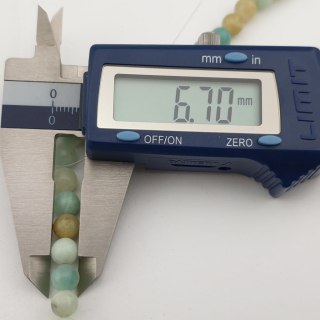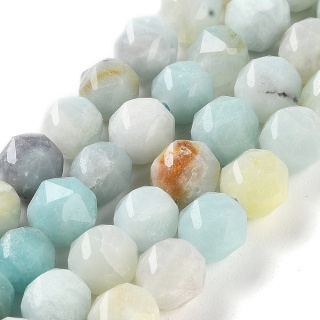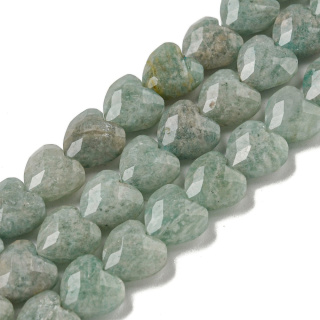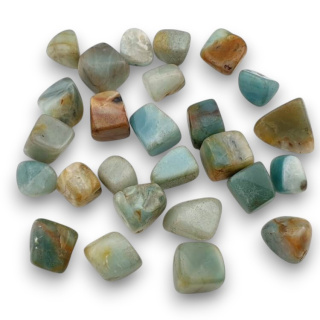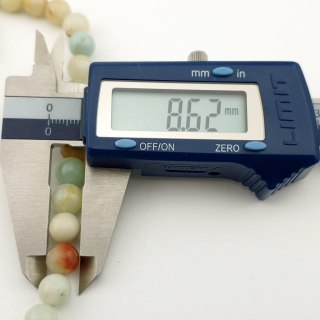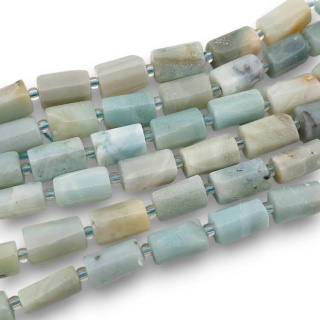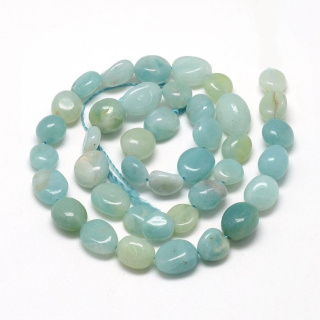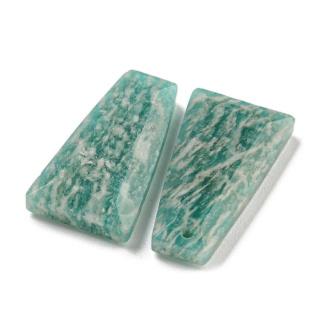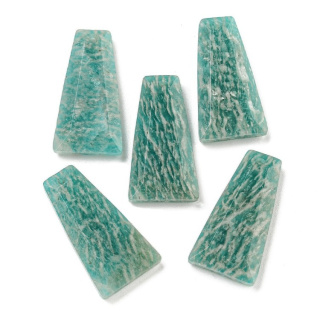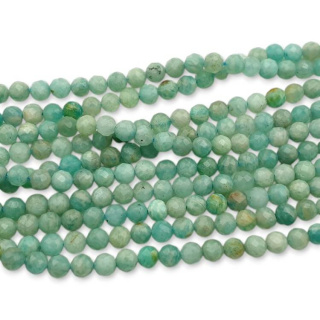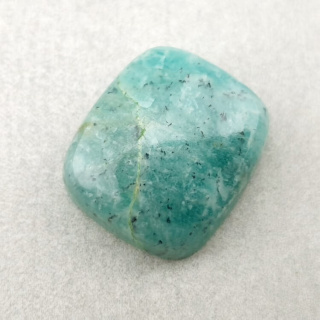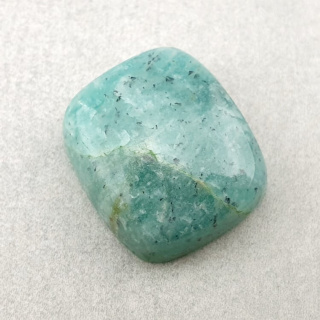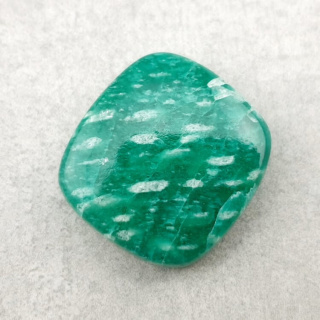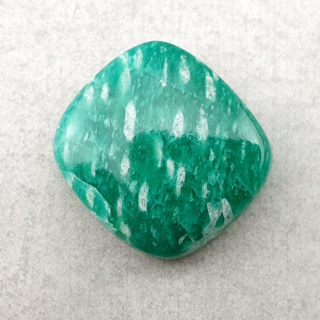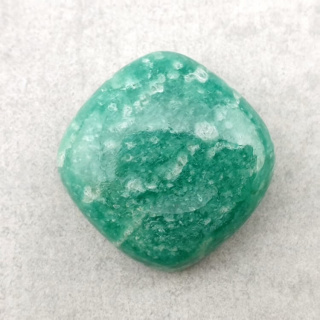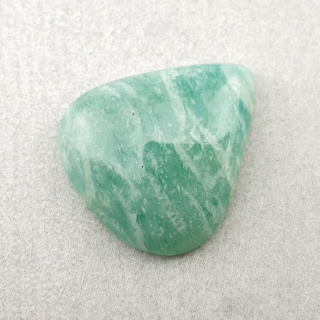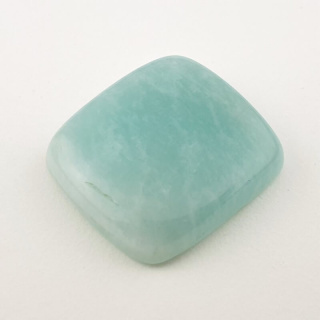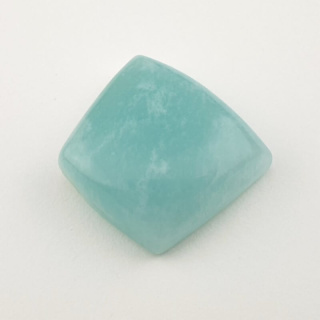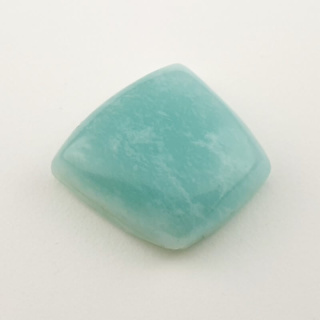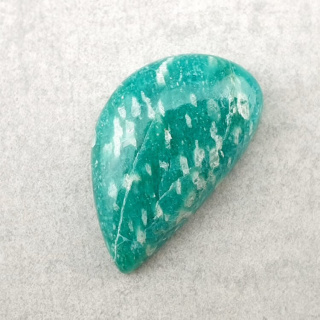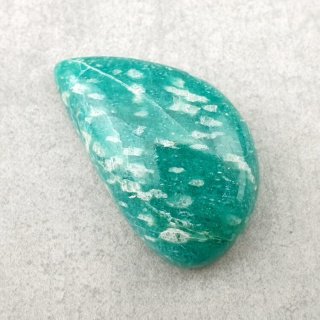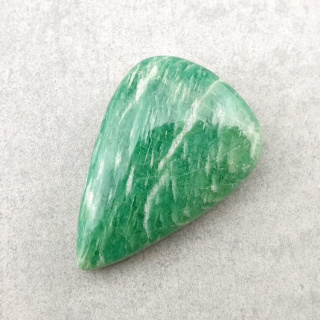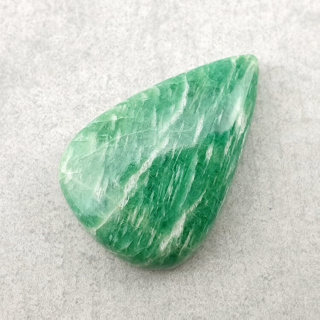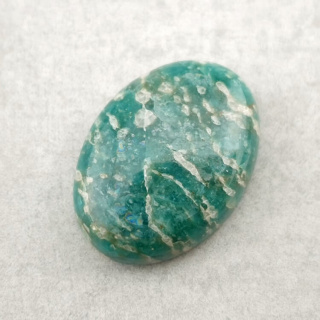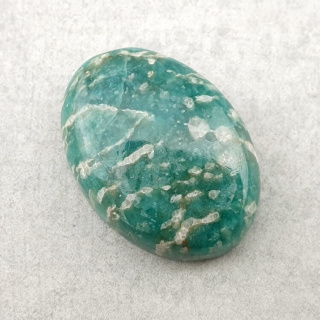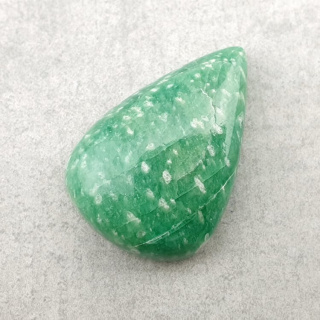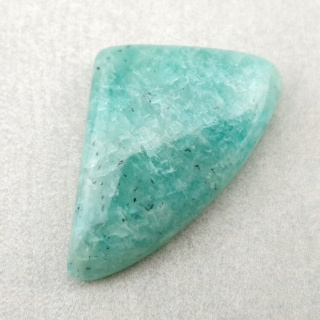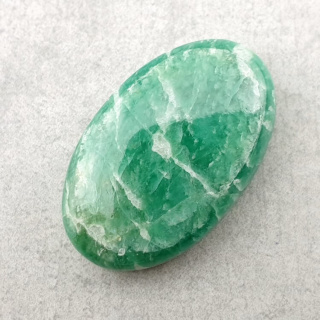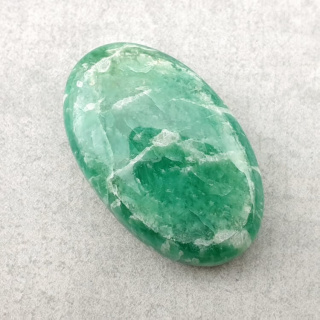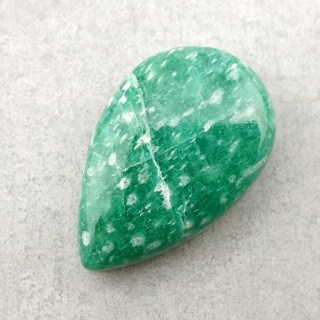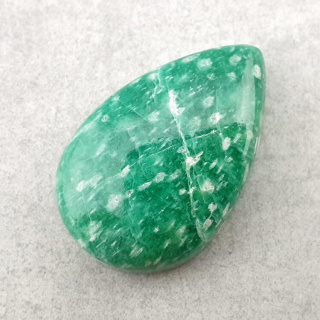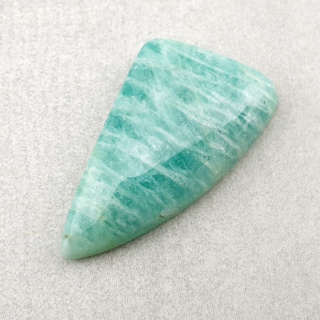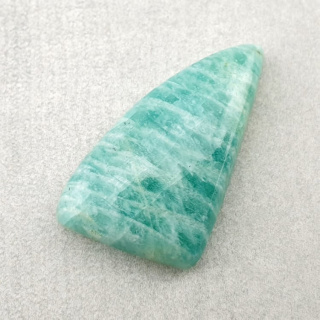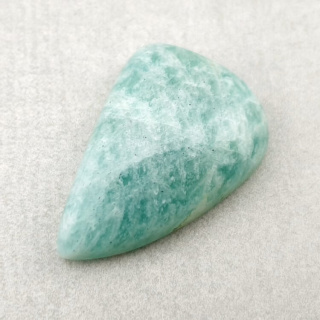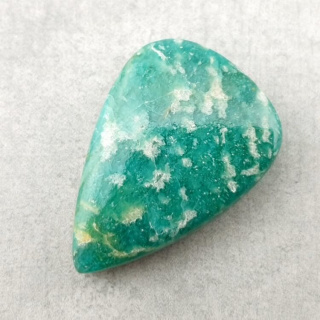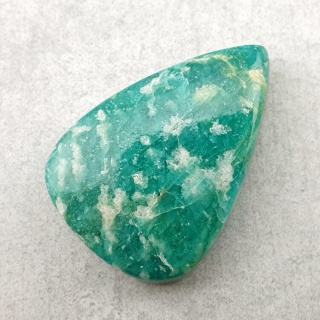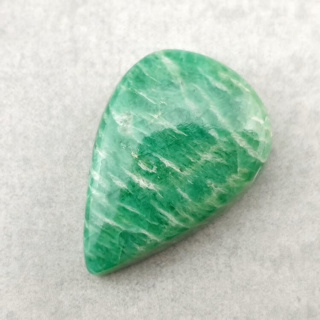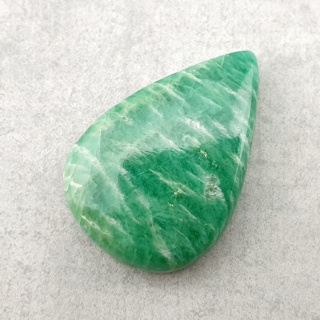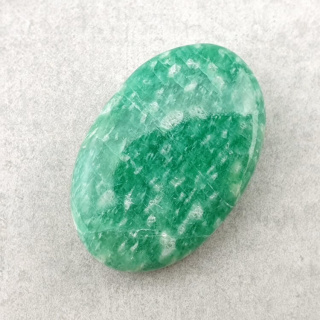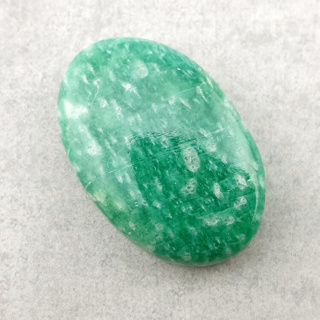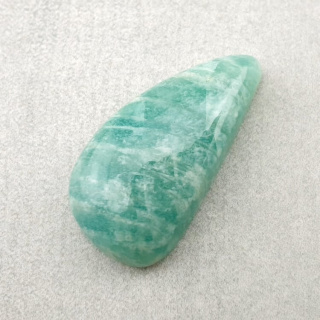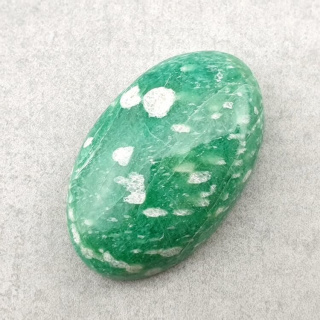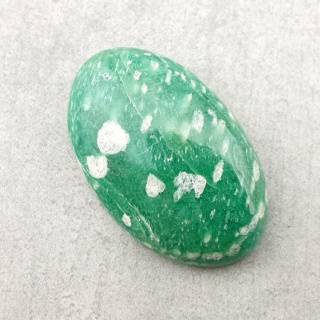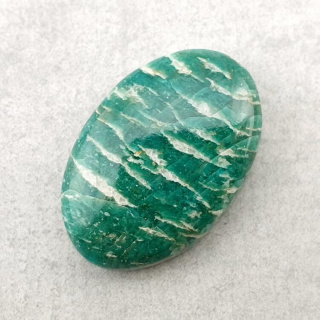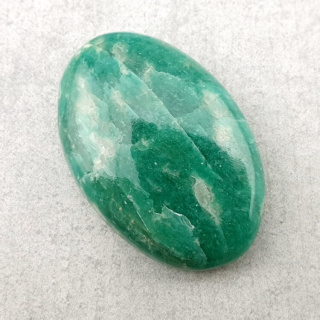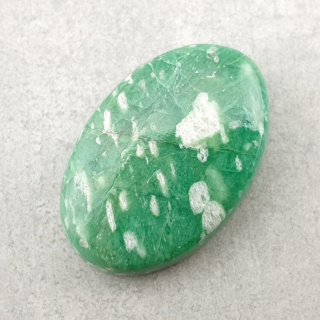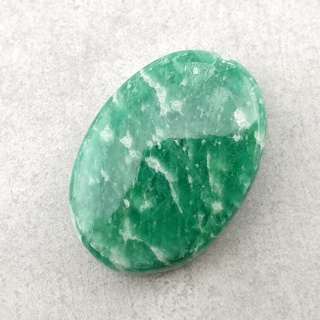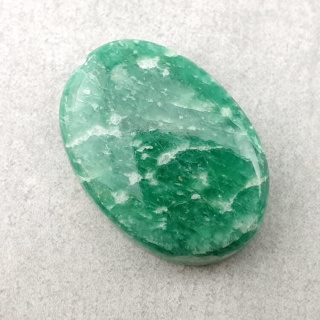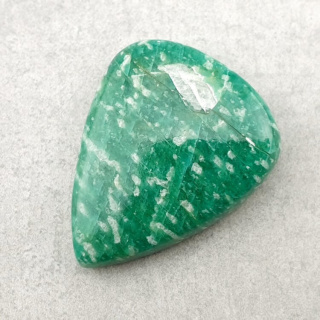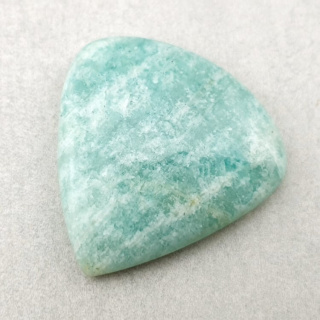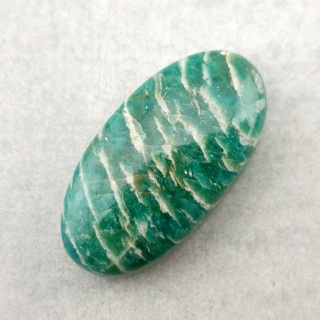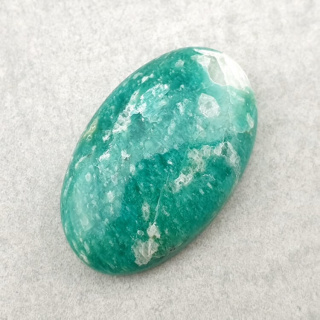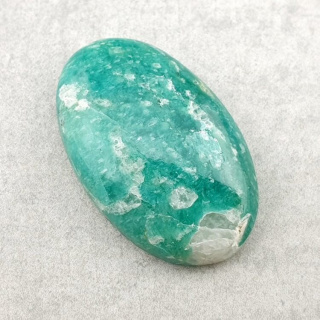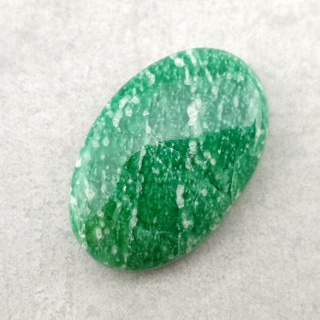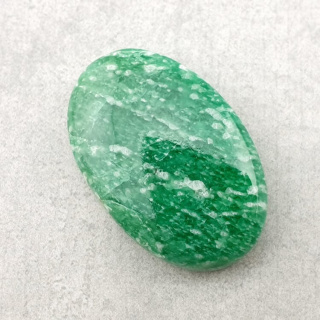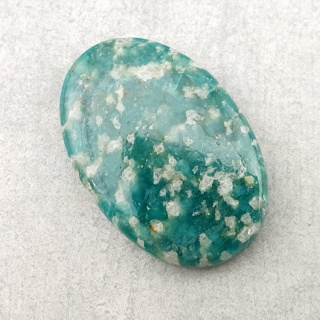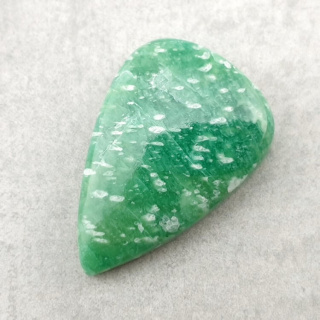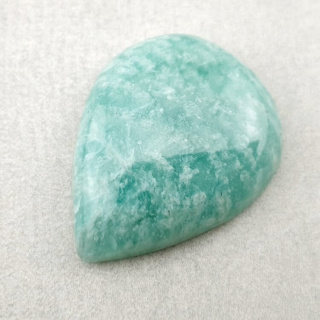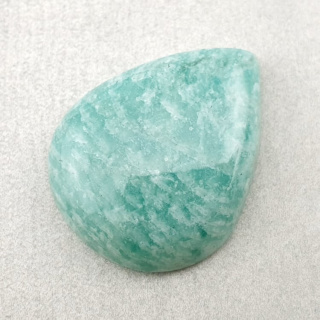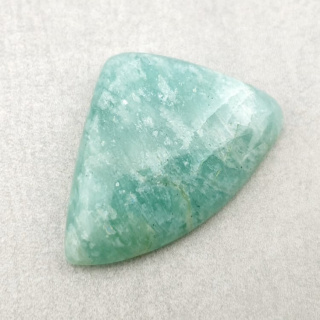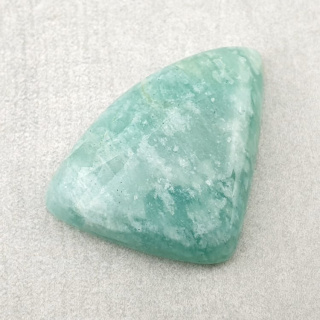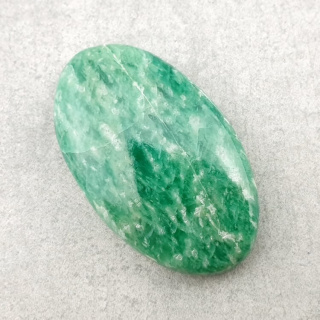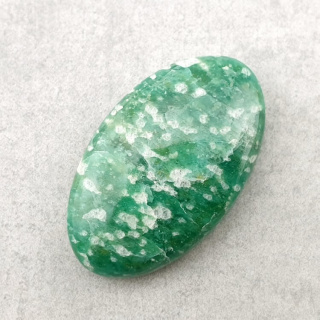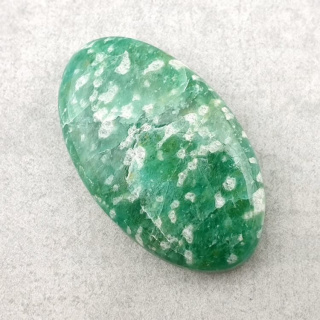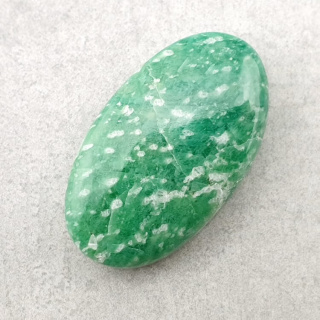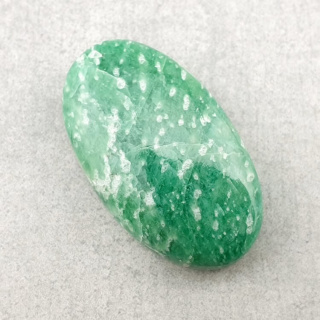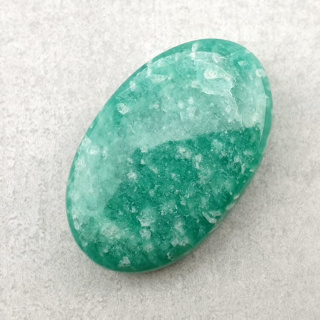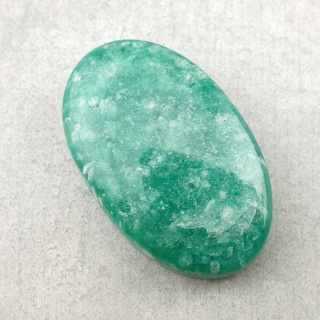Amazonite is a crystal, a variety of microcline.
Number of products : 262Amazonite is a mineral belonging to the sodium-potassium silicate group. It is usually blue-green, but can occur in various shades of green and blue, depending on the sodium content in the mineral.
This mineral is relatively popular in jewelry and ornamentation due to its attractive color and beautiful patterns. Amazonite is often used in jewelry, including rings, necklaces, and bracelets.
What is amazonite and how is it formed?
Amazonite is a variety of potassium (KAlSi3O8) in which some of the potassium atoms have been replaced by sodium, giving it its characteristic light green or blue-green color.
The formation of amazonite is associated with the formation of igneous rocks, primarily granites. Here's how it happens:
- Magmatism: Amazonite is formed as a result of a magmatic process, where hot magma (molten rock) flows from the depths of the earth to the surface. This magma contains the components needed to form amazonite, such as silica (SiO2), aluminum (Al), potassium (K), sodium (Na), and others.
- Cooling and Crystallization: As the magma rises, it loses heat and cools down. During this process, the mineral components begin to crystallize and form different minerals. In the case of amazonite, microcline, which is a variety of sodium-potassium feldspar, crystallizes.
- Reaction with Water: Water contained in rocks can also influence the formation of amazonite. Hydrothermal processes can contribute to changes in the chemical composition of minerals, including the formation of amazonite. Sodium supplied by water is often one of the key components for the formation of amazonite.
- Color: The color of amazonite is due to the presence of microscale impurities of metals such as copper or iron, which can give it its characteristic green or blue-green color.
Amazonite is usually found in granite or granitoid rocks, but it can also be found in other types of rocks, such as pegmatites or sedimentary rocks. It is often found in gold and copper deposits. The presence of amazonite may also be an indicator of the presence of other minerals or precious metals.
This mineral is known for its attractive color and is often used in jewelry and ornamentation. In addition, due to its mysterious properties, amazonite also has significance in esotericism and spirituality.
What are the main properties of amazonite?
Amazonite, like many other minerals, has specific physical properties that help to identify and describe it. Here are the main physical properties of amazonite:
- Color: Amazonite is best known for its distinctive color, which is usually bright green or blue-green. However, the shade of color can vary depending on the sodium content and metal impurities.
- Hardness: Amazonite has a hardness of about 6 on the Mohs hardness scale. This means that it is relatively soft compared to other minerals such as diamond, which has a hardness of 10 on the Mohs scale. The hardness of amazonite is sufficient for it to be relatively easy to work with and polish, making it a popular material in jewelry.
- Luster: The surface of amazonite has a characteristic glassy luster that highlights its natural beauty. This luster makes the mineral attractive in jewelry and decorative items.
- Fracture: Amazonite has a conchoidal to brittle fracture, which means that it breaks or crumbles easily. This is an important characteristic in the process of identifying the mineral.
- Crystal shape: Microcline, a variety of amazonite, has crystals with a dimorphic structure. It occurs in the form of plates, prisms, or granular aggregates.
- Luster: Amazonite often exhibits an opalescent effect known as the shell effect, which makes the mineral appear to shimmer or sparkle in certain areas, especially when rotated in the light.
What are the differences between amazonite and other varieties of sodium-potassium feldspar?
Amazonite, albite, and orthoclase are all varieties of sodium-potassium feldspar, but they differ in chemical composition, crystal structure, and appearance. Here are the main differences between them:
Chemical Composition:
- Amazonite: Amazonite is a potassium variety in which some of the potassium atoms are replaced by sodium (NaAlSi3O8 - KAlSi3O8). It is this sodium admixture that gives it its characteristic blue-green or light green color.
- Albite: Albite is a variety of sodium-potassium feldspar in which sodium predominates over potassium. Its chemical composition is NaAlSi3O8. Albite is usually colorless or white, although it can exhibit various shades.
- Orthoclase: Orthoclase is a variety of potassium in which potassium is the dominant component over sodium. Its chemical composition is KAlSi3O8. Orthoclase is usually colorless, white, or red.
Color:
- Amazonite: Amazonite is known for its characteristic blue-green or light green color, which results from the presence of sodium and other impurities.
- Albite: Albite is usually colorless or white, but can take on different shades depending on impurities.
- Orthoclase: Orthoclase is usually colorless, white, or red, but can also take on different shades depending on impurities.
Crystal Structure:
- Amazonite: Amazonite has a triclinic crystal structure and occurs in the form of plates, prisms, or granular aggregates.
- Albite: Albite also has a dihedral crystal structure and occurs as prismatic crystals.
- Orthoclase: Orthoclase has a monoclinic crystal structure and occurs as prismatic crystals or granular aggregates.
Occurrence:
- Amazonite: Amazonite is relatively rare and occurs in various parts of the world, including Brazil, Russia, the United States, Canada, India, and other locations.
- Albite: Albite is much more common and can be found in many regions around the world, including pegmatites and metamorphic rocks.
- Orthoclase: Orthoclase is also widespread and occurs in many types of rocks, including granites, gneisses, and metamorphic rocks.
Where can amazonite deposits be found around the world?
Amazonite occurs in various locations around the world, although it is not as widespread as some other minerals. Here are the main countries where amazonite deposits can be found:
- Brazil: Brazil is one of the world's main sources of amazonite. The amazonite deposit in the state of Minas Gerais is particularly well known.
- Russia: Amazonite is also mined in Russia, mainly in the Komi Republic and on the Kola Peninsula.
- United States: In the United States, amazonite can be found in some states, such as Colorado, Virginia, and Southern California.
- Canada: Canada has amazonite deposits in some provinces, including Quebec and Ontario.
It is worth noting that the locations of amazonite deposits may vary in terms of the quality and quantity of the mineral, as well as its appearance. Amazonite from different regions may have different shades of green or blue-green.
Does amazonite have any significance in esotericism or spirituality?
Yes, amazonite has significance in esotericism and spirituality, and is believed to have various spiritual and healing properties. Below are some of the popular beliefs and interpretations regarding the properties of amazonite in an esoteric context:
- Stone of Balance and Harmony: Amazonite is often considered a stone of balance and harmony. It is believed that wearing or keeping it nearby can help restore emotional and mental balance and calm the nerves.
- Stone of Truth and Faith: Amazonite has a reputation as a stone that helps you express your feelings and thoughts with greater honesty. It helps develop the ability to express yourself and your beliefs.
- Stone of Calm: In esoteric circles, amazonite is considered a stone that helps reduce stress and anxiety. It has a calming effect on the mind and helps maintain peace in difficult situations.
- Creativity Stone: Some believe that amazonite stimulates creativity and imagination. It can help develop new ideas and solutions.
- Protective Stone: In esoteric traditions, amazonite is considered a protective stone against negative energies and influences. It helps protect against the negative emotions of other people.
- Healing Stone: In some cultures, people believe that amazonite has healing properties and can help alleviate physical and emotional ailments.
- Spiritual Development Stone: For some, amazonite is a stone that promotes spiritual development and enables the attainment of deeper inner knowledge.
It is worth noting that the properties attributed to natural stones in esotericism are often subjective and based on beliefs. There is no scientific evidence that stones have these properties in a medical or scientific sense. However, for many people, wearing amazonite or keeping it in their environment can be a source of spiritual and emotional support.
Yes, amazonite is sometimes used for therapeutic purposes, especially in practices related to stone therapy and meditation. However, it is important to note that stone therapy and the use of gemstones for healing purposes have no scientific basis or official recognition in conventional medicine. It is more of an alternative and esoteric practice. Here is how amazonite is used in these contexts:
- Stone therapy: Stone therapy is a practice that involves placing gemstones on or around the patient's body to stimulate energy points or areas of the body. Natural amazonite stone is sometimes chosen for its attributed healing properties, such as calming and balancing. Gemstone therapists may use amazonite in a variety of ways, such as placing it on the chakras or areas of the body that need attention.
- Meditation: Amazonite is often used as a meditation tool due to its calming and harmonizing properties. Meditation practitioners may hold the stone in their hands or place it in front of them during meditation to help achieve peace of mind and focus.
- Meditation jewelry: Jewelry that contains amazonite, such as malas, bracelets, or necklaces, can be worn during meditation. The stone can serve as a reminder of your meditation intention and help you achieve the right state of mind.
- Energy cleansing: Amazonite is believed to have the ability to cleanse the surrounding energy and attract positive energy. People can use it to cleanse their living space or personal items.
It is important to note that the effectiveness of stone therapy and meditation using stones depends on the individual beliefs and experiences of the person.
Is amazonite susceptible to any chemical processes or reactions that could affect its appearance or durability?
Yes, amazonite is susceptible to certain chemical processes or reactions that may affect its appearance or durability. Here are some factors that may affect amazonite:
- Moisture: Amazonite should be stored in a dry place as it can absorb moisture from the environment. Moisture can cause discoloration or small cracks.
- Sunlight: Prolonged exposure to direct sunlight can cause amazonite to fade or change color. This is especially true for some varieties of amazonite that contain metal impurities.
- Acids and chemicals: Amazonite can react with acids or chemicals, which can lead to surface erosion or changes in its structure. Therefore, avoid contact with acids and harsh chemicals.
- High temperatures: Amazonite can lose its color or change its structure when exposed to very high temperatures. Therefore, avoid exposing it to sudden temperature changes or extreme heat.
- Abrasion and scratching: Although amazonite is relatively hard, it is still susceptible to scratching and mechanical damage. Therefore, jewelry with amazonite should be worn with care and contact with sharp objects should be avoided.
![[{[item.product.name]}]]([{[item.product.photo.url]}] 75w)




